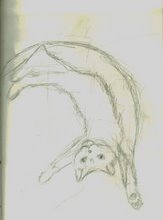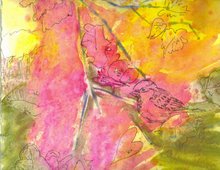Grade 7
Learning Objectives:
Students will examine the relationship between language and image
Students will look at various writing systems looking at the symbols that create language, particularly hieroglyphics, and kanji
http://en.wikipedia.org/wiki/Writing_system
Students will look at the development of technology in communicating ideas
The Language of Art : Art communicating mythology and history
Our early picture books and documentaries:
rock painting in Africa and Australia
wall paintings and relief in Egypt
our relationship with contemporary art and graphic media
Exemplars: Benjamin Franklin and the first political cartoon
comic books, and manga
Printmaking:
Development of printing as a visual medium: wood engravings and etchings
Japanese prints --> Mary Cassatt
Kathe Kollwitz
Wood print (engravings in magazines), lithography
growth of popular magazines, prints, and book illustration -->
the advent of color printing in magazines and books -->
impact of technology the printing press --> the camera obscura
Estimated time: Flexible
Materials:
Pen & Ink
Watercolor
Photoshop
InDesign
Standards : Massachusetts Standards for Arts Education and Technology Integration
The Arts Disciplines
2.7, 2.8, 2.9 Elements and Principles of Design
4.4, 4.5 Drafting, Revising, and Exhibiting
5.6 Critical Response
6 Purposes and Meanings in the Arts
7 Roles of Artists in Communities
9 Inventions, Technologies, and the Arts
10 Interdisciplinary Connections
Classroom Activities:
I. Walk like an Egyptian
Hieroglyphics: the alphabet, the rosetta stone
slides of Reliefs, Pyramids
Write like an Egyptian: Say my Name, Say my Name
II. The Hero's Journey through Myth
In Pairs they research and choose a story from myth they would like to illustrate
Egypt, Greece, Roman, Japanese, Chinese, Indian, Celtic, Cherokee, Pueblo/Navaho, Aztec, Mayan, Australian, African (index cards)
III. the Printing Press!
Roots of Mass Media
printing press --> internet
Photoshop the Mythology Illustrations
IV. Zine it!
History of Comics, Comic Books & Manga
1st comic strip: Ben Franklin Revolutionary Snake Political Cartoon
Examining Political and Social Contexts
Prominent Comics
Students Bring in their Favorite Comic
potentially: storyboard, illustrate, inDesign
Research:
Understanding Comics by Scott McLoud
Will Eisner's Guide to Sequential Art
Japanese Manga History
http://www.japan-zone.com/modern/manga.shtml
http://www.bellaonline.com/articles/art26811.asp
http://en.wikipedia.org/wiki/Manga
http://www.matt-thorn.com/mangagaku/history.html
Political Cartoons : Ben Franklin
http://inventors.about.com/od/cstartinventions/a/comics.htm
http://www.adobe.com/education/pdf/exchange/cartoons_wb.pdf
“Join, or Die,” cartoon in The Pennsylvania Gazette, Benjamin Franklin, Library Company of Philadelphia
http://www.benfranklin300.com/_imgBank_resources/13_med.jpg
Join or Die Cartoon Essay
http://www.bbc.co.uk/dna/h2g2/A1091369
http://www.benfranklin300.com/imagebank_13_detail.htm
Tuesday, May 1, 2007
Subscribe to:
Comments (Atom)



















